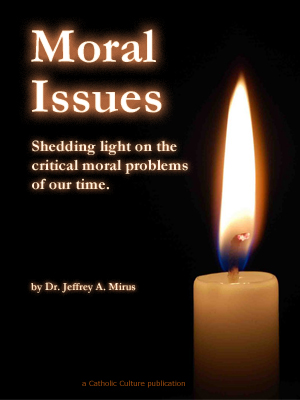Catholic Recipe: Panes de Muertos
Also Called: Bread of the Dead
In Mexico, even more than in Italy, November 2 is a great festival. November 1, El Dia de los Todos Santos, or All Saints', is especially for the angelitos, or souls of little children, while November 2, El Dia de los Muertos, the Day of the Dead, is a national holiday dedicated to the adult dead. Ceremonies rarely confine themselves to a single day. Certain villages celebrate the occasion from one to three weeks, since some Indians reason that the souls must get a week's vacation when they return to earth. Other Indians claim that because of drinking to much pulque among themselves, souls often lose their way and find it difficult to return on schedule to the Land of Shades. Festival customs and beliefs vary widely from city to village and hamlet to hamlet, since some Indians — in spite of nominal conversion to Catholicism — still observe many old pagan rites.
The Day of the Dead is the time when everyone feasts, laughs, jokes, and flirts with Death. Young girls present their sweethearts with necktie pins fashioned like skeletons, with gleaming eyes and dangling legs. In the shops there are all sorts of grotesque masks and miniature skeletons — with clay hands and feet — that nimbly hop up and down slender sticks. Poets and musicians rival each other in writing macabre verses and singing of death.
On All Souls' in Mexico City and other large centers, crowds start pouring into cemeteries before sunrise. Some come afoot, others in conveyances. All are laden with candles, flowers, and food for the dead. Now and then someone carries a toy for a child. The rich lay flowers on the graves in areas reserved for the upper classes, and then withdraw. But the poor decorate their graves, set up offerings, and then remain to chat, eat, sing, and hold fiesta with their dead and with each other. All kinds of special foods are prepared for the departed. There are small cakes and candies made like crossbones, and grinning skulls with glittering tinsel eyes. Children gleefully munch chocolate hearses, miniature funeral wreaths, and gaily colored candy coffins with skeletons that leap out at the twitch of a string.
While these gruesome sweets delight youthful palates, panes de muertos, the bread of the dead, made with eggs and anise and baked in human or animal shapes, are a more universal treat. Bakeshops do a brisk business in these traditional breads. Sometimes they are modeled like fat peons with fancy jackets and embroidered pants, or equally fat women with arms akimbo and elaborately decorated fiesta skirts. There are animals, too, all deftly fashioned.
The humble Mexican remembers his dead both at home and in the cemeteries. Parents, believing that the di funtos chiquitos, the little dead ones, return home on All Saints', shoot off fire crackers so the noise will guide the child's soul to the right door. A path strewn from the grave to the but with flower petals is an additional aid to safe arrival. Once the small soul enters his own house, he finds a candle burning in his honor, sweets to eat, and a toy for entertainment.
For the adult dead who return on All Saints' Eve, there are even more elaborate preparations. Families set up artistically arranged ofrendas, or altars to the departed, on a new floor mat or a table spread with colorful peasant linen. The altars vary greatly, but usually they have special flowers for the dead and black or yellow beeswax candles. Incense is burned, and there are fruits, chocolate, bread, and many other foods, especially those the souls most enjoyed when on earth. The Indians believe that their departed see, smell, and taste, just as they did in the flesh. Once the spirits have a chance to eat and drink, the living begin their feast.
Often men and boys make village rounds, stopping before the doors to sing hymns in memory of the dead. Householders invite the singers to enter and share the feast. Then they light the beeswax candles, one after the other, and pronounce the names of the departed.
Panes de muertos will also appeal to American youngsters. The recipe that follows is modified and adapted for use on many different occasions. The sweet egg dough makes an excellent base for various kinds of feast-day breads. Use it for Halloween, Christmas, or children's parties by molding it into animal or human figures. Add raisin eyes and colored frosting accents. For Easter, fashion droll bunny faces with pink icing on the ears and staring chocolate-bit eyes.
DIRECTIONS
Scald milk, stir in sugar, salt, and butter, and set aside to cool. Place warm water in large bowl and sprinkle in yeast, stirring to dissolve. Add lukewarm milk mixture and beaten eggs. Stir until blended. Add the flour and anise and beat thoroughly. Turn on floured board and knead 10 minutes. Place dough in greased covered pan, brush over with melted butter and leave to rise until double in bulk (about 1 hour). Punch down dough, pulling sides toward center, and let rise 10 minutes.
Mold into desired shapes, brush with melted butter and let rise until doubled (approximately 1 hour). Bake in moderate oven (350° F.) for 15-20 minutes. The above recipe makes two medium-sized loaves of delicious bread. Bake 45 minutes in a moderate oven (350° F.). Frost and decorate for holiday occasions.
Recipe Source: Feast-Day Cakes from Many Lands by Dorothy Gladys Spicer, Holt, Rinehart and Winston, 1960






